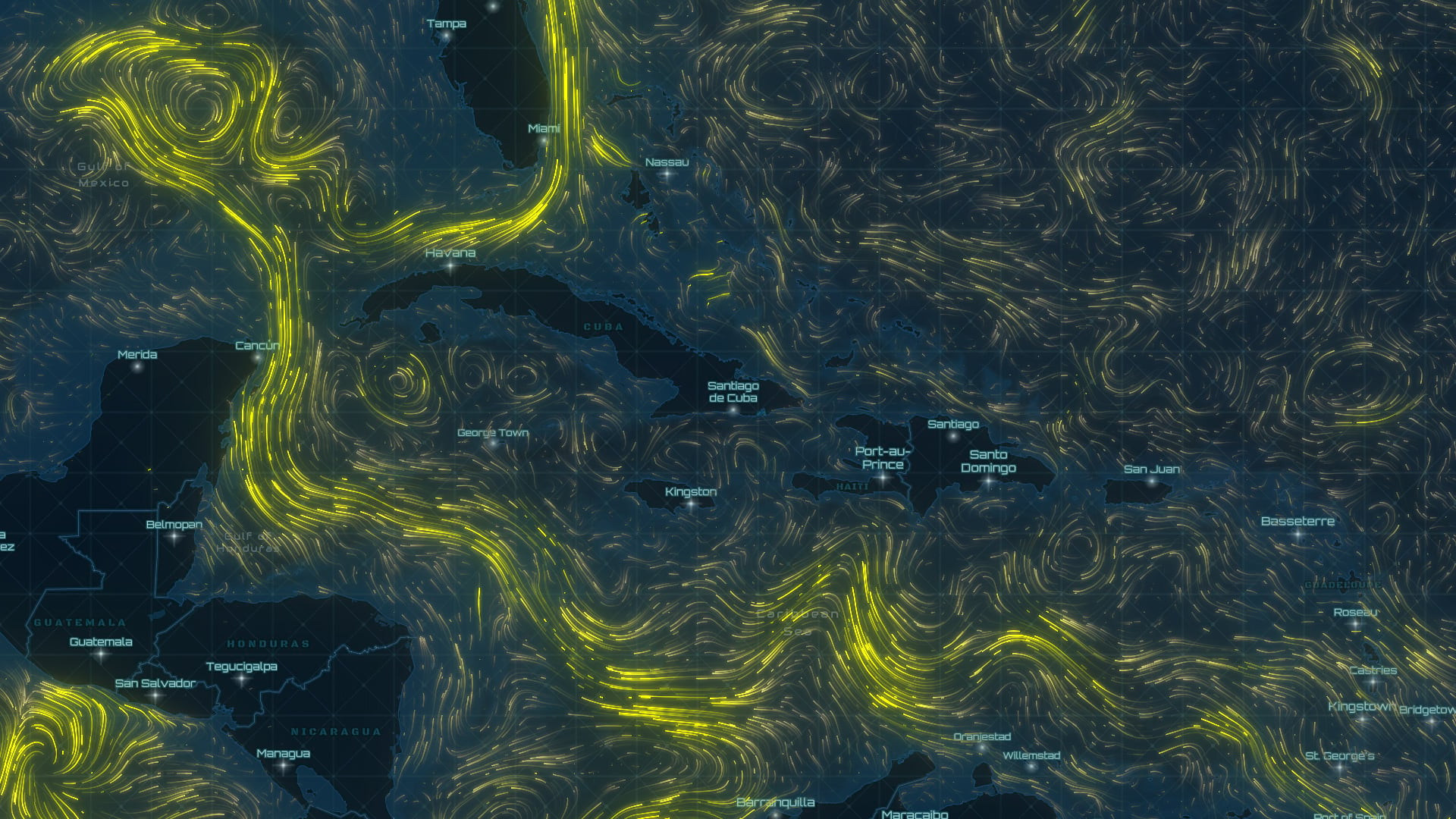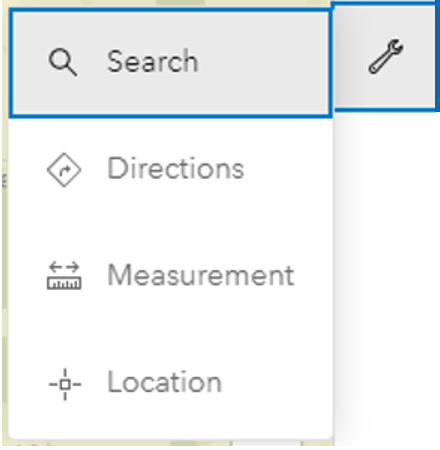
With the March 2022 update, Map Viewer continues to advance web cartography with new innovations in data visualization such as the Flow Smart Mapping Style. In addition, you’ll find both new and familiar features requested from across the globe, from streamlined and more powerful editing to nested group layers and the ability to switch between basemap projections within your gallery.
Quick Links
- Flow Smart Mapping Style
- Basemap Projection Switching
- Editing Enhancements
- Keyboard Shortcuts
- Charts Enhancements
- Duplicate Feature Layers
- Imagery Filtering Enhancements
- Nested Group Layers
- Map Tools Organization
- Smart Mapping Updates
Flow Smart Mapping Style
The Flow Smart Mapping Style is a powerful new way to visualize raster data that has magnitude and direction values. Authors can map their data with either streamlines or wavefronts to create a one-click map animation ideal for ocean currents, wind speed, and other field observations. Authors can control the speed, density, thickness and decay rate of the lines to bring geographic patterns into focus. Use layer effects and blending to enhance your data with a stunning visual profile.

Basemap Projection Switching
With the March ArcGIS Online update, Map Viewer supports switching between basemaps with different spatial references from within the basemap gallery. Previously, only basemaps matching the current map’s spatial reference were accessible in your basemap gallery. Those which did not match the current map were inaccessible.
Now you can access all basemaps in your organization’s basemap groups and easily switch between them.
Learn more about the new and improved basemap projection switching at this link

Editing Enhancements
Map Viewer has joined Experience Builder in adopting the modern ArcGIS API for JavaScript editor and its capabilities, including Geometry guides and Feature to feature snapping options supporting precise feature placement and orientation.
Map Viewer is also promoting tighter integration with form editing, which you may recognize from Field Maps and ArcGIS Pro. With this alignment come contingent values and greater support for Arcade integration in the form of calculated expressions.
Check out these links to learn more about Geometry guides, snapping and calculated expressions

Keyboard Shortcuts
With the March 2022 update, Map Viewer brings a long-time efficiency favorite to your mapping experience with a new set of keyboard shortcuts. You’ll find the current list by following the tip below.
Please let us know what you think by posting your feedback in the ArcGIS Online section of Esri Community or the comments section below. Is there a shortcut we missed? A key combo which doesn’t feel right? Is it perfect? We’d love to know your thoughts!

Charts Enhancements
Bring your data to life by adding ranges and guide lines to your Charts. In the screenshot below, you can see at a glance where the Max Level and Critical Range have been set. This shows your stakeholders valuable context without requiring they perform calculations to discover general trends in the data’s distribution and deviation.

Duplicate Feature Layer
Similar to the Copy layers feature in Map Viewer Classic, duplicating a feature layer enables you to create multiple visualizations of the same data where each layer can have its own configuration while still referencing the same source data. Though only applicable to feature layers today, stay tuned for additional layer types in upcoming ArcGIS Online updates.

Imagery Filtering Enhancements
With the March 2022 update, imagery users will find the new option to “Select images from view” to select a set of images in a table based on their visibility on the map. This display can also be locked by using the “Show only selected” button in the attribute table.

Nested Group Layers
Map Viewer introduced Group Layers in July 2020, and users quickly recognized value in adding them to another group… and maybe another. Where categorization and taxonomy are important to define for your stakeholders, group layers within other group layers by using either the layer actions or a simple drag-and-drop.

Map Tools Organization
You may notice a little bit more breathing room in your Settings (light) toolbar. Click the new wrench icon to reveal a collection of Map tools now grouped together, streamlining the mapping interface.

Smart Mapping Updates
Smart Mapping, our core thematic mapping technology, continues its seven-year journey with a fresh new face and simpler workflow designed by your feedback. You’ll find the process of making thematic maps more clearly differentiates between what’s required and what’s optional so you can choose between rapid deployment and experimentation.
This new Smart Mapping design flags important decision points in the workflow for newer map makers without adding friction or extra clicks for experienced users.
Smart Mapping also offers lightweight unobtrusive contextual “nudges” to encourage constructive experimentation—try a bivariate or multivariate map on for size—revert with a click or show off new data insights highlighted by a novel perspective.


Article Discussion: